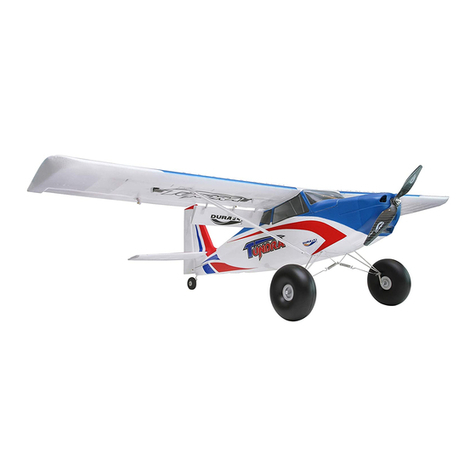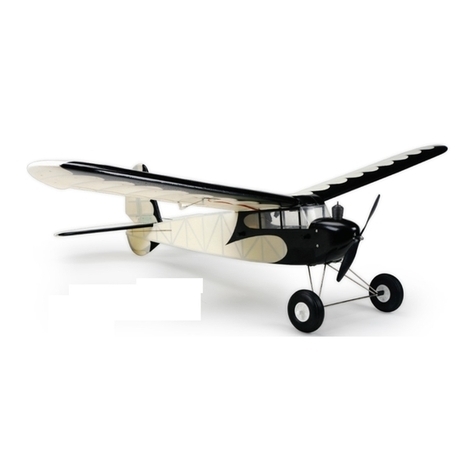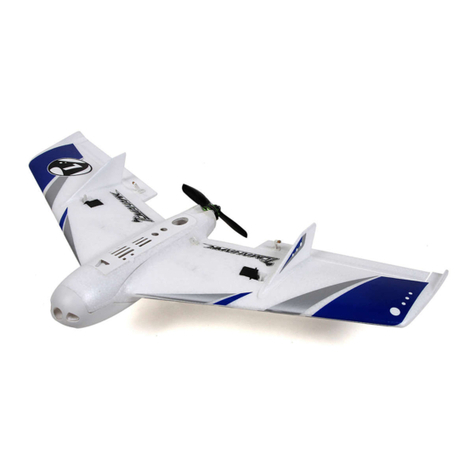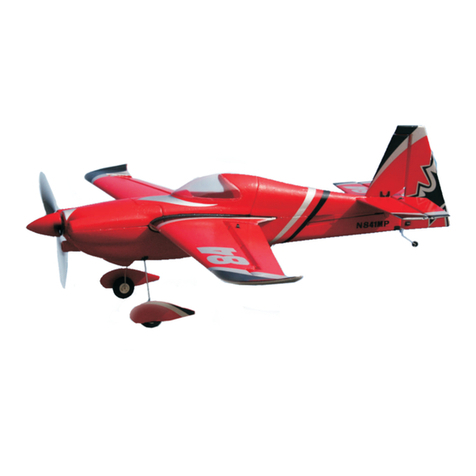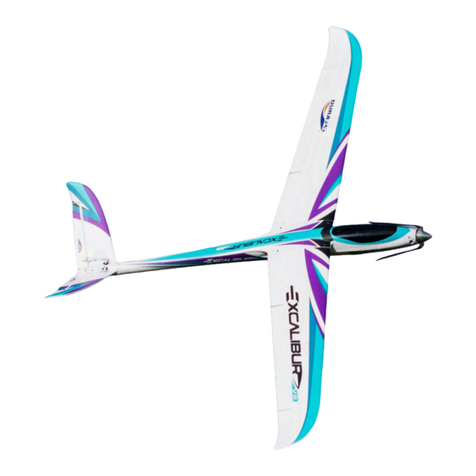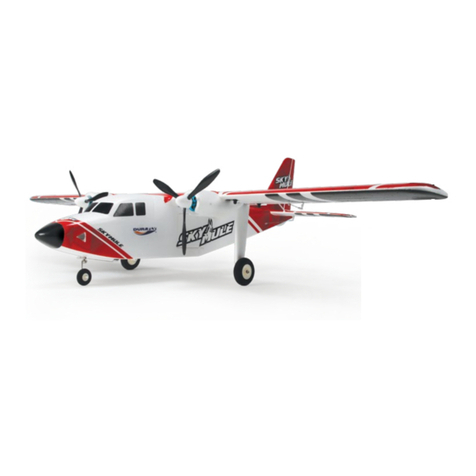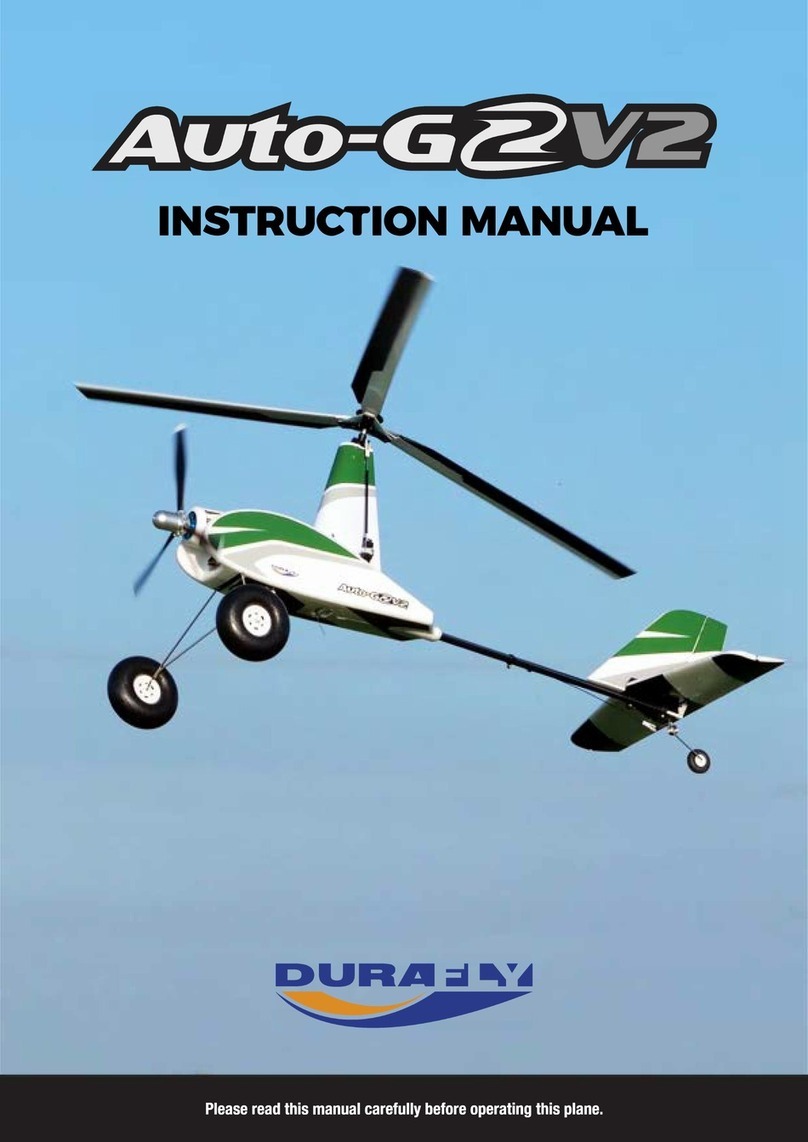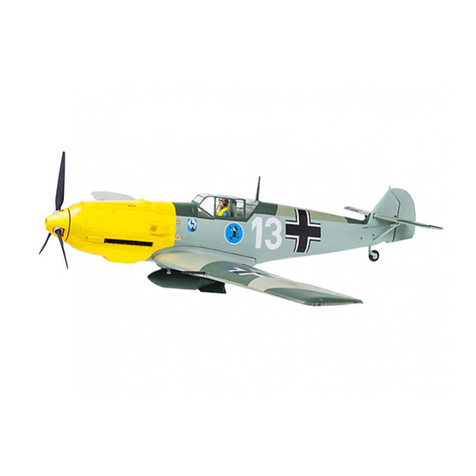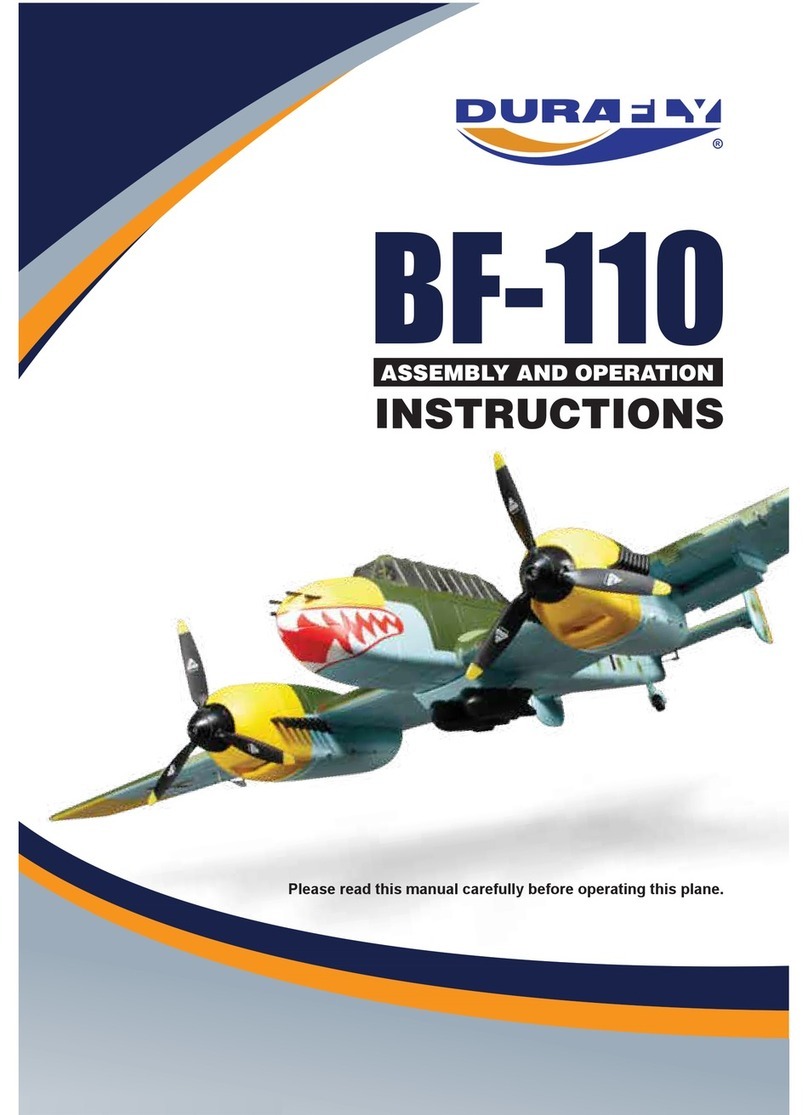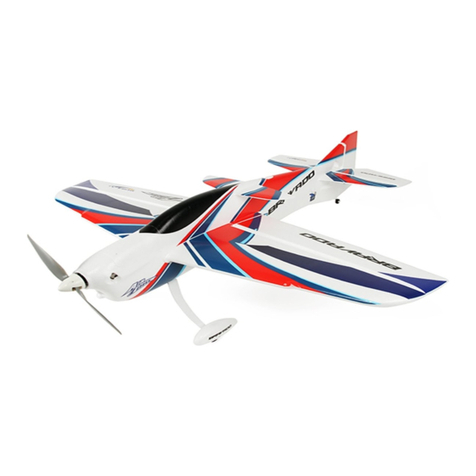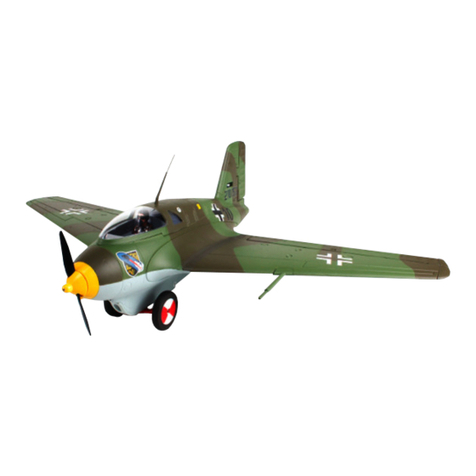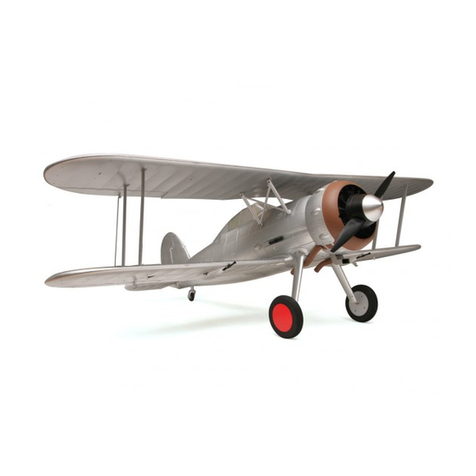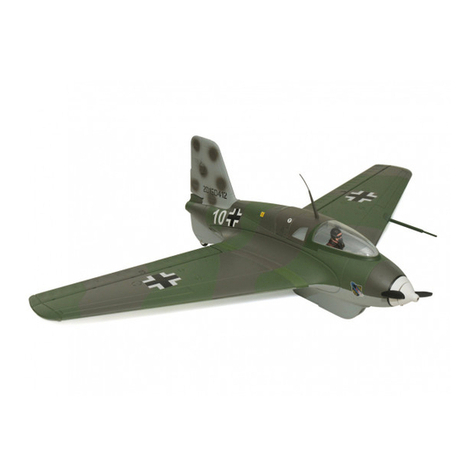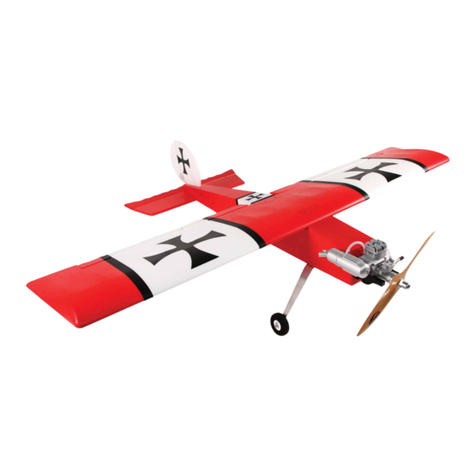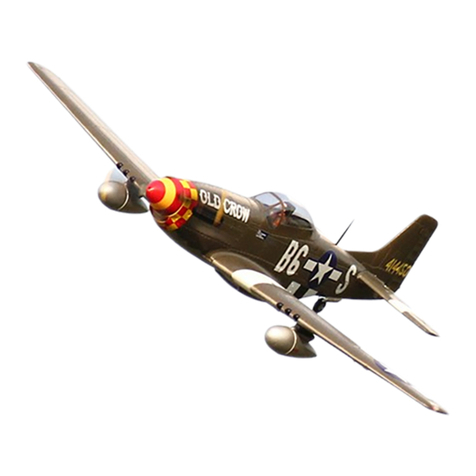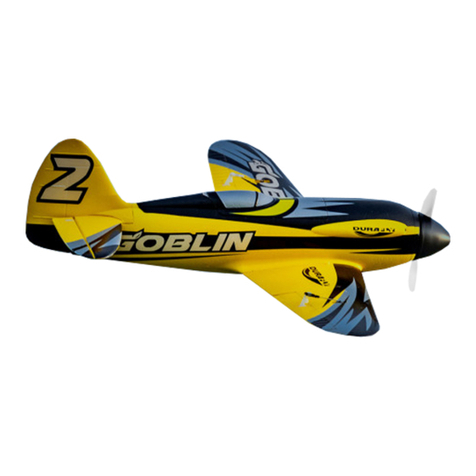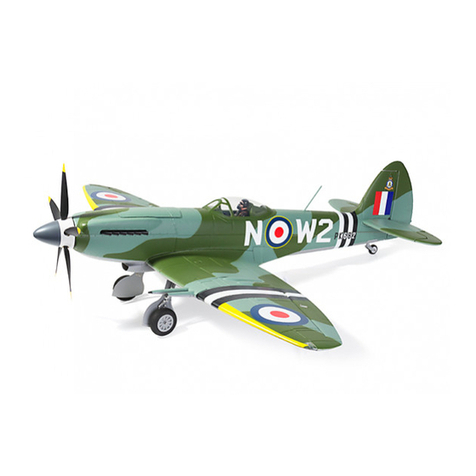Setting the Centre of Gravity
Like any other aircraft, it mus t be balanc ed at a particular point in order to achieve stable flying
characteristics. Assemble your model ready to fly, and install the flight battery.
The Centre of Grav it y (CG) should be at a position of 84 mm away from wing leading edge, please
refer to attached picture.
Support the model at this position on two fingertips, and it should balance level. If not, you can
mov e the flight batt ery forward or aft to correct the balance point. Once the correct position is
found, mark the location of the flight pack inside the model t o ensure that it is always replac ed in
the same position.
Preparations for the first flight
Please wait for a day with as little breeze as possible for the model’s init ial test -f light . The evening
hours are often ideal for calm conditions.
Be sur e to carr y out a r ange check before the fir st fli ght, usi ng the procedur e descr ibed in your
RC system instructions. If you encounter a problem, please don’t risk a flight.
The fi rst fl ight . . .
If you are a beginner to model flying we strongly recommend.
that you ask an experienced model pilot to help you for the first few flights.
Hand-l aunching
Please don’t try unpowered test-glides with this model – the result is invariably a damaged
airframe. The Neptune should be hand-launched with the motor running at half-throttle, and
always pointing directly into wind.
Ask an experi enced modell er to hand-launch your aircraft for you.
The launcher shoul d run for ward for two or thr ee paces, then gi ve the machine a power ful
straight launch, with the wings and fuselage level. Use the controls to hold the model in a
steady, gentle climb - remember to keep the rate of ascent shallow and the airspeed high!
All ow the aer oplane to cli mb to a safe hei ght, then adj ust the tri ms on the tr ansmi tter until i t
flies in a perfectly straight line “hands off”. While the model is still at a safe altitude, throttle
back and tr y out the control s on the gl ide. Carry out a “dry run” landing approach at a safe
hei ght so that you ar e prepar ed for the r eal landi ng when the batter y r uns fl at.
Don’t try any ti ght tur ns at fi rst, and especi al ly not on the landing approach at l ow al ti tude. It i s
always better to land safely at some distance from you, than to force the model back to your
feet and risk a heavy landing.
38 Safety
Safety is the First Commandment when flying any model aircraft.
Thir d par ty i nsur ance should be consi der ed a basic essenti al . I f you j oin a model cl ub sui table
cover will usually be available through the organisation. It is your personal responsibility to
ensure that your insurance is adequate. Make it your job to keep your models and your radio
control system in perfect order at all times. Check the correct charging procedure for the
batter ies you are using. Make use of al l sensi ble safety systems and pr ecauti ons whi ch ar e
advised for your system. An excellent source of practical accessories is the SUPER-E main
catalogue, as our products are designed and manufactured exclusively by practising modellers
for other practising modellers.
Always fly with a responsi bl e attitude. You may thi nk that fl yi ng l ow over other peopl e’ s heads
is proof of your piloting skill; others know better. The real expert does not need to prove
himsel f i n such chil di sh ways. Let other pilots know that thi s is what you think too.
Always fly in such a way that you do not endanger your self or other s. Bear i n mi nd that even the
best RC system i n the wor l d is subject to outsi de inter fer ence. No matter how many year s of
accident-free flying you have under your belt, you have no idea what will happen in the next
minute.
